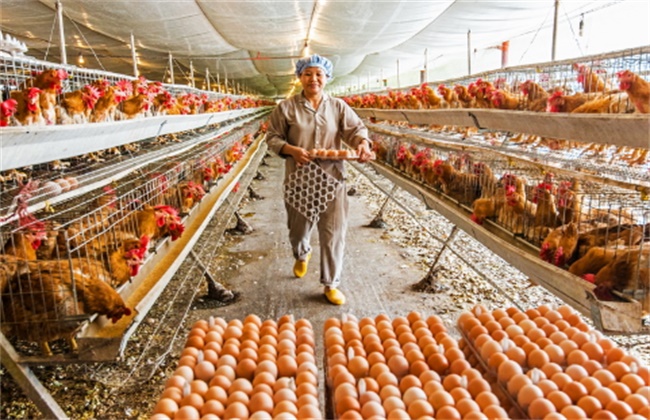Antenatal precautions of laying hens
A few weeks before the start of laying, the hen is in the transitional stage from the growing period to the laying period, in which a series of light is needed, such as cages, immunization and so on. At this time, the hens are raised with physiological changes, weak adaptability and poor disease resistance, and if not managed properly, it is very likely to affect the performance of egg production. So what should you pay attention to before laying hens? Let's get to know it.
1. Make preparations for being caged.
The henhouse and equipment have a great impact on the health and production of laying hens, so check the henhouse and equipment before turning to the cage, especially pay attention to the equipment such as material system, drinking water system, power supply and lighting system, ventilation system, drainage system and cage. Once abnormalities are found, timely maintenance should be carried out, and comprehensive cleaning and disinfection of chicken coops and equipment should be done. First, clean the feces, dust and dirt on the chicken coop floor, roof, walls, and equipment, then rinse the chicken coop and equipment with a high-pressure water gun, and spray disinfectant after drying.
2. Turn to the group and get into the cage
Modern high-yield hybrid laying hens generally can lay eggs when they grow to 17 weeks, so the caged time must be before 16-17 days old, so that the new hens have time to adapt to the new environment before laying, and have sufficient time for vaccination and other work. If the cage time is too late, it will not only delay the time of laying, but also affect the laying rate. Stress for hens that have already started production may stop laying eggs, or even cause yolk peritonitis and increase the number of dead eggs. Therefore, when entering the cage, according to the requirements of the breed, the small, thin and weak chickens and the remnant chickens with no feeding value should be removed, and the high-quality chickens with lively spirit, strong physique and suitable weight should be selected. When entering the cage, it is necessary to enter the cage according to the size of the chicken, and at the same time, according to the number of chickens contained in the cage, enter a sufficient number of chickens in each single cage at a time to avoid bullying the chickens who enter the cage first and then enter the cage.
3. Immune deworming
Immunization should be carried out before the opening of production, which is very important to prevent the occurrence of epidemic diseases during the laying period. Immunity should be reasonable, in line with the actual situation, the source of the vaccine should also be reliable, and there should be quality assurance. The operation should be correct, the dose should be accurate, and it should be checked after vaccination. Antibody testing should be carried out when necessary to ensure the effect of immunization. Before the start of production, we should also do a good job of deworming, the commonly used drugs are levamisole or Ascaris lumbricoides, reasonable feeding according to the instructions, reasonable deworming.
4. Lighting
Light has a great effect on the reproductive function of chickens, enhanced light promotion can promote egg production, while shorten light to inhibit egg production, so laying hens through light control to stimulate and maintain egg production balance. The light hours can be increased to 13 hours at the age of 16 to 17 weeks, and then increased by 20 minutes per week until the light hours reach 16 hours, while the underweight chickens should begin to light stimulation at the age of 18 to 20 weeks.
The above is the layer prenatal precautions, hope to help you, want to know more related knowledge, please follow us.
Related
- On the eggshell is a badge full of pride. British Poultry Egg Market and Consumer observation
- British study: 72% of Britons are willing to buy native eggs raised by insects
- Guidelines for friendly egg production revised the increase of space in chicken sheds can not be forced to change feathers and lay eggs.
- Risk of delay in customs clearance Australia suspends lobster exports to China
- Pig semen-the Vector of virus Transmission (4)
- Pig semen-the Vector of virus Transmission (3)
- Five common causes of difficult control of classical swine fever in clinic and their countermeasures
- Foot-and-mouth disease is the most effective way to prevent it!
- PED is the number one killer of piglets and has to be guarded against in autumn and winter.
- What is "yellow fat pig"? Have you ever heard the pig collector talk about "yellow fat pig"?



